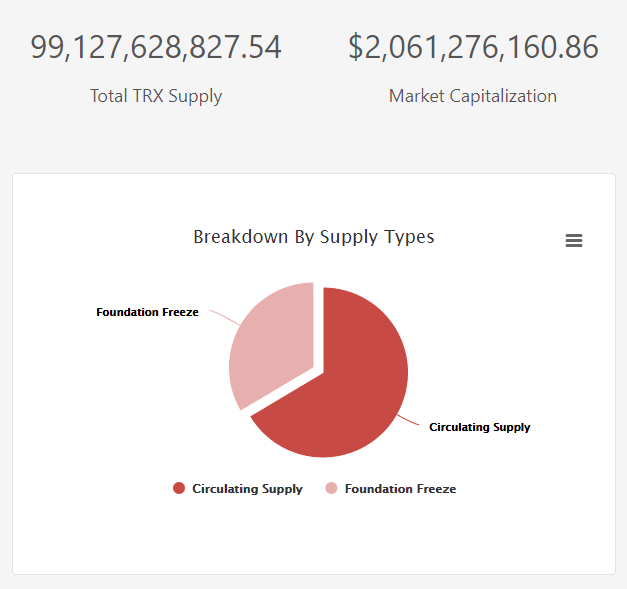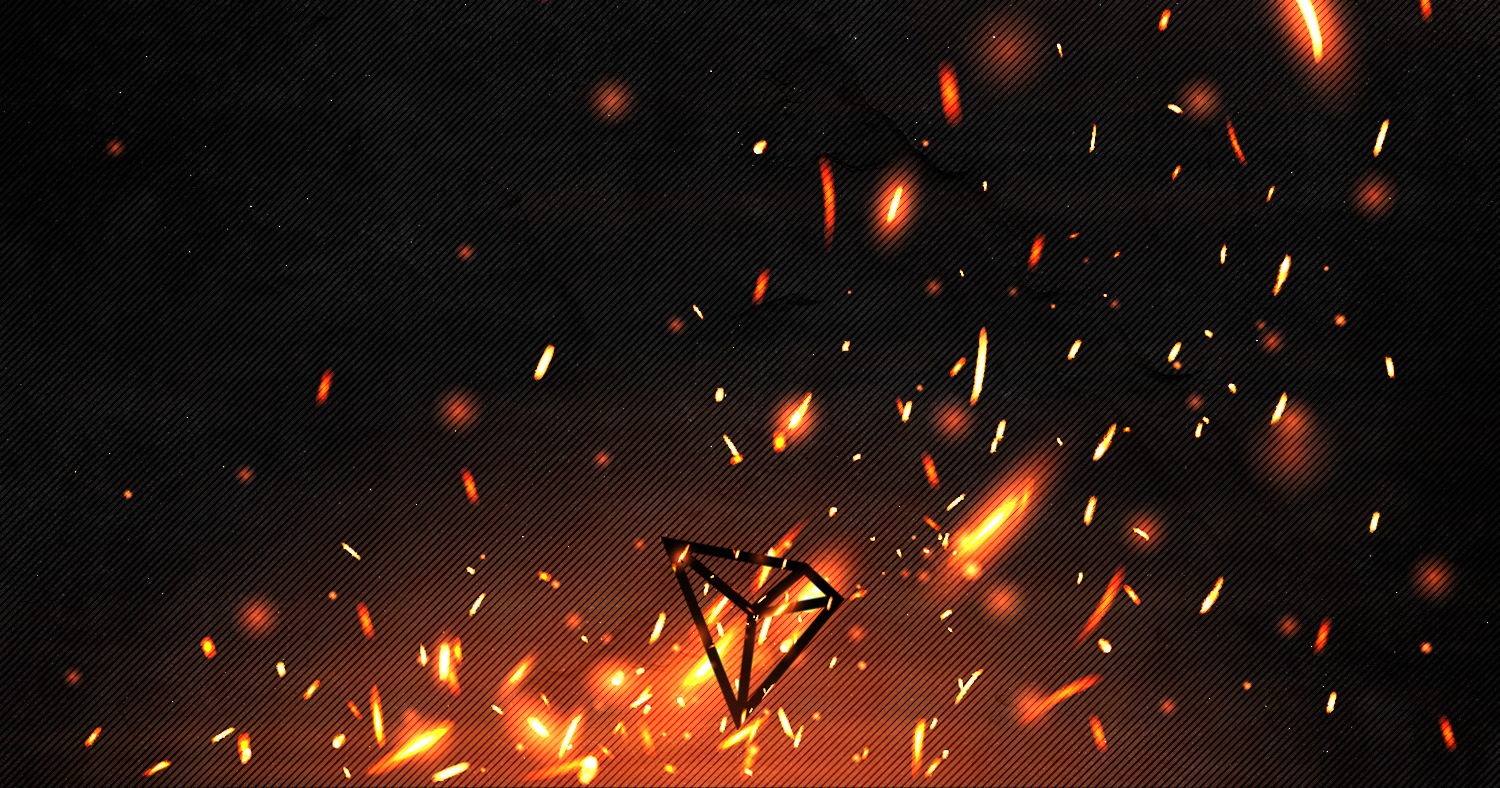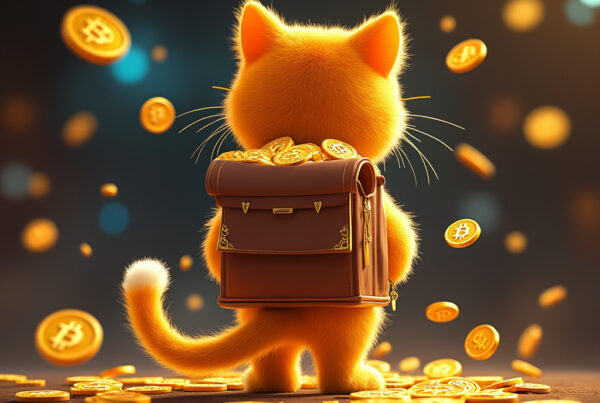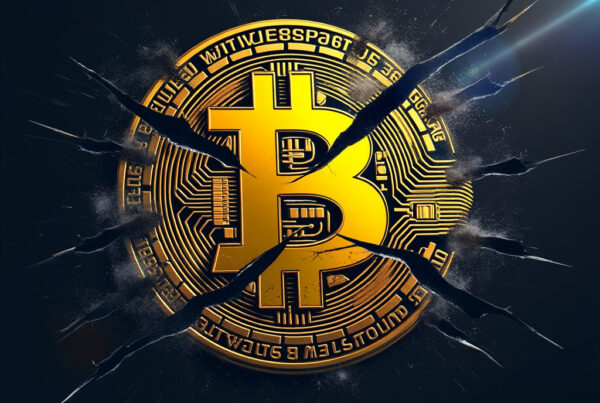When dealing with cryptocurrencies, one of the major concerns of investors has always been the token total supply. Tron’s native token, the TRX, has always had the perception that the total supply is too large. Is this warranted? It depends who you ask. If you believe the Tron protocol will host millions and millions of users, the TRX supply needs to be large to meet the demand. If the supply is too small, users will be transacting in fractions which is always a nuisance. And the opposite, dealing in very large numbers, is also a pain. If you do nothing Tron will succeed in getting to the masses, then yes, the supply may be too large as no one likes dealing in cents. It all boils down to phychological factors as nothing really changes. One hundred tokens at $0.01 is the same as one token at $1.
When the Tron protocol, or any protocol for that matter, was created, an estimate had to be established as to the overall use of the platform. Based on Tron’s current total supply, the creators apparently believed that mass adoption of their token was a credible possibility.
The TRX Initiation
When Tron first got developed as an ERC20 token on the Ethereum network, the total supply was set to 100 billion tokens. This does indeed sound like a lot. But the price was only $0.002 USD in November of 2017. If the supply would have been 100 million, that would equate to a price of $20 per token to achieve the same market cap.
The common consensus on the street was that the total supply would never increase. Instead, the supply would decrease using an XRP-style burn where a little TRX would get burned per transaction. As Tron Independence Day came, and Tron was now running on its own blockchain, it no longer had to deal with the limitations posed by the Ethereum network. Nonetheless, having selected a DPOS architecture, where 27 Super Representatives(SRs) are voted in by the community in order to maintain and run the system, some form of compensation had to be given to these entities. Where would this money come from?
Tron Gets Liberated and Burns
As Tron Independence Day became a reality, Justin Sun announced that Tron will be burning 1 billion coins in order to celebrate this important milestone in Tron’s evolution. On June 21, Justin Sun tweeted the following:
Letter to the community: #TRON Independence Day. Celebrate on June 25th as we become a free, autonomous, and self-governed decentralized internet. Join us in celebrating with a ??1 billion #TRX coin burn! @Tronfoundation https://t.co/NZrpDq6V9V pic.twitter.com/NFmIjRAF6u
— Justin Sun (@justinsuntron) June 21, 2018
Essentially, about $50 million dollars were burnt at the current price at the time. This was seen as a very positive thing by the token holders. Less supply in the market is always a plus for upward price pressure.
Super Representatives Affecting Supply
As with anything in this world, nothing is for free. The Super Representatives that run the network need to pay for the servers that run the Tron Protocol. Therefore, the Tron Foundation had to devise a system where the SRs would get adequate compensation for the service that they are providing. What options did Tron have? I am sure different alternatives could be devised, but the obvious ones were for the Tron Foundation to use their reserves to pay for this service, or to create extra coins to give to the SRs.
As of late, there have been a few posts online questioning why the supply of TRX is now above the 99 billion that was left after the burn. In order to understand why, I will explain how the TRX reward structure functions. All Super Representatives get paid 32 TRX for each block produced. Every 3 seconds, one of the super representatives creates a block in a take-a-turn fashion. Furthermore, only Super Representatives are able to produce blocks. As for SR Candidates, they can run nodes but cannot produce blocks.
In addition to what I just discussed, the top 127 candidates get to split 16 TRX every 3 seconds. That is 460,800 TRX daily. This allows higher ranked candidates and SRs to get more rewards. This number may soon double as a motion was proposed to the SRs for voting. I will disclose more information at a later time.
The 100 Billion Coin Question
Justin Sun burned 1 billion coins but then used a coin creation methodology to reward the SRs. Based on the numbers, it equates to 1,382,400 per day. Therefore, 1 billion coins would be able to last 723 days before making the total token supply exceed 100 billion tokens. Of course, if the top 127 candidates start to get double the rewards, the total days would be less. The total supply is currently 99.127 billion tokens.

Will TRX Supply Exceed 100 Billion?
This is the magic question. Some people keep saying that this hasn’t been addressed by the Tron Foundation. That may actually be true. But I’ll tell you what I think. They do not know at this time. No, that is not a bad thing by any means. It will all depend on what the market conditions are when the time comes. If the price of TRX is $0.02, odds are that they will not exceed 100 billion coins. Why? Because there are smart people behind the scenes who know it is not the right time for any type of inflation.
On the other hand, if the TRX price goes up to $0.70 by the time we approach the 100 billion threshold, there is room for a little inflation as the benefits of more coins outweighs the inflationary pressures. This means that the demand for TRX is healthy and strengthening, therefore, any inflation will be overcome by strong demand.
Like I said, this is my opinion. Why would you announce something at a time when there is barely any benefit for it? Nothing goes up regardless of the magnitude of the news. We all know the Bittorrent purchase should have exploded the TRX price if we were in a bull market. So why bother announcing something which we still have over a year to ponder? Let’s just all focus on improving the ecosystem and, in due time, everything will fall in place.






Comments